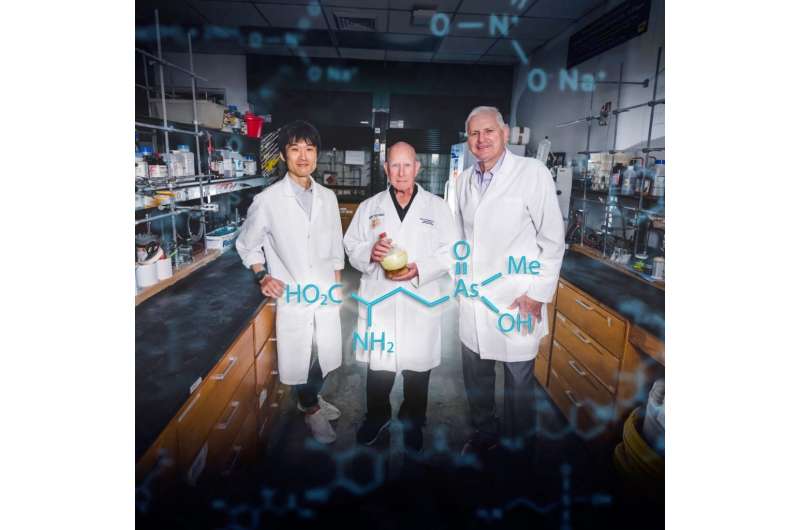Florida International University scientists discovered the first and only known natural arsenic-containing antibiotic to fight antibiotic resistance.
Now, research reveals it can stop transmission of a deadly disease spreading in the U.S. for the first time in 20 years: malaria.
A team from FIU's Herbert Wertheim College of Medicine developed arsinothricin (AST) to combat the rise of antibiotic-resistant bacteria. Lab tests proved AST effectively defeated the most notorious, including E. coli and Mycobacteria, which cause tuberculosis.
Collaborating with malaria researchers in the College of Arts, Sciences & Education, they've recently also found AST prevents Plasmodium falciparum, the parasite that causes malaria, from infecting mosquitoes—unlike other current antimalarial drugs. The discovery, recently published in Microorganisms, paves the way for AST to one day be developed into a more effective antimalarial drug for humans.
"Current antimalarials don't completely stop transmission, meaning patients can continue to infect mosquitoes before they recover," said lead author of the study Masafumi Yoshinaga, associate professor of Cellular Biology & Pharmacology. "Developing new potent multi-stage drugs is imperative to ensure malaria elimination and eradication. We found AST is a promising lead compound for developing a new class of potent multi-stage antimalarials."
While AST contains arsenic—an incredibly toxic, deadly poison—it is not pure arsenic. In fact, since the early 1900s, arsenic-based medications have been used to safely treat and prevent many diseases. When FIU researchers tested AST on liver, kidney and intestinal cells, AST targeted the malaria parasite lurking in human cells but didn't damage the cells themselves.
An estimated 240 million malaria cases are reported worldwide every year. While the majority occur in Africa, malaria can still happen in the U.S. Recently, the U.S. Centers for Disease Control and Prevention issued a health alert about several locally acquired malaria infections in Florida and Texas, marking the first time it has spread in the United States since 2003.
Only mosquitoes transmit malaria. According to Jun Li, associate professor of biological sciences, Biomolecular Sciences Institute researcher and one of the study's authors, malaria spreads when a mosquito bites someone with malaria, and the parasites in the blood infect the mosquitoes. Ten days later, infected mosquitoes can bite another person and transmit the disease to them. Using AST to prevent parasites from spreading to mosquitoes breaks the malaria life cycle.
The team has received a U.S. patent for the chemical synthesis of, and methods of using AST. But before AST can become a drug—a sometimes lengthy, expensive process—the team will continue their research investigating how it enters human red blood cells, where it can be even more effective against the parasite.
"What's exciting about our research is it demonstrates how chemically different AST is from other drugs and that gets us even closer to drugs that are more effective," said Barry P. Rosen, distinguished university professor and a member of the research team. "We have a long way to go before we have a drug that goes to market, but this foundational work paves the way toward that goal."
- Karlston and Mutton
-

 2
2



Recommended Comments
There are no comments to display.
Join the conversation
You can post now and register later. If you have an account, sign in now to post with your account.
Note: Your post will require moderator approval before it will be visible.